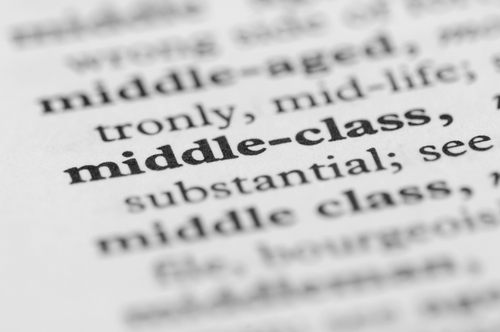
OTTAWA – There is a middle class crisis, but it’s happening south of the border, not in Canada, according to a New York Times report on incomes around the world.
The newspaper says an analysis it conducted with the LIS data centre shows that while Canadian median income per capita trailed the U.S. badly at the turn of the century, it had caught up by 2010 and now likely is ahead.
And overall, the study shows Canada tied with the U.S. for the highest per capita median income of the countries compared, including Germany, France and Britain.
The median income numbers represent the mid-point of income distribution so that one half the population will be above and one half below. The levels are per person in a family, which includes non-earning children and in some cases spouses.
During the decade, the median per capita income in the Canada rose 20 per cent to reach the U.S. equivalent of US$18,700 after taxes (C$20,607) – or about US$75,000 for a family of four. At the same time, median income remained stagnant in the United States between 2000 to 2010.
The Times speculates that Canada’s middle class has likely surpassed the U.S. since 2010 as incomes have grown faster in Canada since then.
“The findings are striking because the most commonly cited economic statistics – such as per capita gross domestic product – continue to show that the United States has maintained its lead as the world’s richest large country,” the newspaper noted.
“But those numbers are averages, which do not capture the distribution of income. With a big share of recent income gains in this country (the U.S.) flowing to a relatively small slice of high-earning households, most Americans are not keeping pace with their counterparts around the world.”
The middle class crisis has become a hot political issue in Canada. Liberal Leader Justin Trudeau has pressed the issue almost daily in question period, while NDP Leader Tom Mulcair has also pledged to work to reduce income disparities.
The Times report does not directly refute Canadian critics of income inequality since the catch up is mostly due to stagnant middle class incomes south of the border, more than robust growth here.
Still, Employment Minister Jason Kenney took to Twitter to trumpet the report.
“Canada is officially home to the richest middle class on the planet,” he retweeted, and, “If Justin Trudeau is interested in evidence-based policy on the middle class, he should read this,” among other messages.
In recent weeks, Kenney and other government ministers downplayed the income inequality problem by referencing a February Statistics Canada report showing that median net worth rose almost 80 per cent to $243,800 between 1999 and 2012, although much of that increase was due to home values.
Benjamin Tal, deputy chief economist at CIBC (TSX:CM), call the study “interesting” but noted in a emailed comment that “due to their jobless recovery our median income is almost 10 per cent higher” even factoring in the impact of currency differences between the two countries.
“My point, however, is that it is not that we are doing great but that they (the Americans) are doing very badly when it comes to a widening income gap,” he said in a note.
“When you look at Canada over the past 15 years what’s interesting is that the two groups that have seen the most significant growth in income were the bottom 20 and the top 20. The middle has seen its income growth lagging. . . . So the bottom line is that the fact that we are doing better than the U.S. is no cause for a celebration.”
David Macdonald, an economist with the left-leaning Centre for Policy Alternatives, says the Times study used different methodology in order to compare a diverse range of countries and that Statistics Canada data show median incomes rising at a slower pace than reported by the newspaper.
“Picking the U.S. in 2010 also discounts the fact there was a major global recession whose epicentre was the U.S. and hurt a lot of the big European countries as well,” he said. “This was at the worst times for the U.S. middle class.”
He adds that Canadian families are among the most indebted with a record high household debt of about 164 per cent of after-tax income.
The Times report does suggest that whatever income inequality exists, the gap has grown appreciably wider in the U.S. than in Canada.
While Canadian median income has caught up, at the 95th percentile Americans still make 20 per cent more than their northern counterparts with annual after-tax income of US$58,600 per person, not including capital gains.
On the other hand, Canada and Western European countries do much better than Americans at the low-end of the income distribution.
The Times cites several factors in the recent trend, including that educational attainment has risen more slowly in the U.S. than in many other advanced countries, top corporate executives make substantially more in the U.S., and U.S. corporations distribute a smaller slice of their earnings to their workers.
“Finally, governments in Canada and Western Europe take more aggressive steps to raise the take-home pay of low and middle income households by redistributing income,” the paper states.